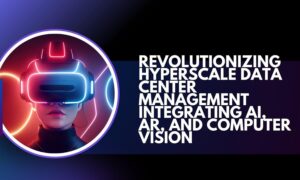Apple has finally unveiled its long-awaited augmented reality (AR) headset, the Vision Pro. The device is expected to cost $3,499 and will be available in early 2024.
The Vision Pro is a powerful piece of hardware, featuring an M2 chip, a ton of sensors, and a new R1 chip. The M2 chip provides the power needed for the headset’s high-resolution display and advanced spatial audio system. The R1 chip is designed for real-time processing of the real world, which is essential for AR applications.
The Vision Pro also features a number of sensors, including cameras, LiDAR scanners, and motion sensors. These sensors allow the headset to track the user’s head and hand movements, as well as the environment around them. This information is used to create a realistic and immersive AR experience.
The Vision Pro is expected to be used for a variety of applications, including gaming, education, and productivity. It could also be used for professional applications, such as architecture and engineering.
The release of the Vision Pro is a major milestone for AR. It is the first high-end AR headset from a major technology company, and it could help to popularize AR technology.
What does the future hold for Apple Vision Pro?
The Apple Vision Pro is a powerful piece of hardware with a wide range of potential applications. It is still too early to say what the future holds for the device, but it is clear that it has the potential to revolutionize the way we interact with technology.
Here are a few potential applications for the Apple Vision Pro:
Gaming: The Vision Pro could be used for a variety of gaming experiences, including virtual reality (VR) games and augmented reality (AR) games. VR games would allow users to fully immerse themselves in a virtual world, while AR games would allow users to interact with virtual lookobjects in the real world.
Education: The Vision Pro could be used for a variety of educational purposes, such as virtual field trips, 3D modeling, and interactive simulations. Virtual field trips would allow students to experience different places and cultures without leaving the classroom. 3D modeling would allow students to create realistic models of objects and environments. Interactive simulations would allow students to experiment with different concepts and learn by doing.
Productivity: The Vision Pro could be used for a variety of productivity tasks, such as video conferencing, remote collaboration, and 3D design. Video conferencing would allow users to have face-to-face conversations with people who are not in the same physical location. Remote collaboration would allow users to work together on projects from different locations. 3D design would allow users to create 3D models of objects and environments.
Professional applications: The Vision Pro could be used for a variety of professional applications, such as architecture, engineering, and medicine. Architecture would allow architects to design buildings in a virtual environment. Engineering would allow engineers to design and test products in a virtual environment. Medicine would allow doctors to diagnose and treat patients in a virtual environment.
These are just a few of the potential applications for the Apple Vision Pro. The device has the potential to revolutionize the way we interact with technology, and it will be interesting to see how it is used in the years to come.
For more exciting articles, don’t forget to reach out to me here



































